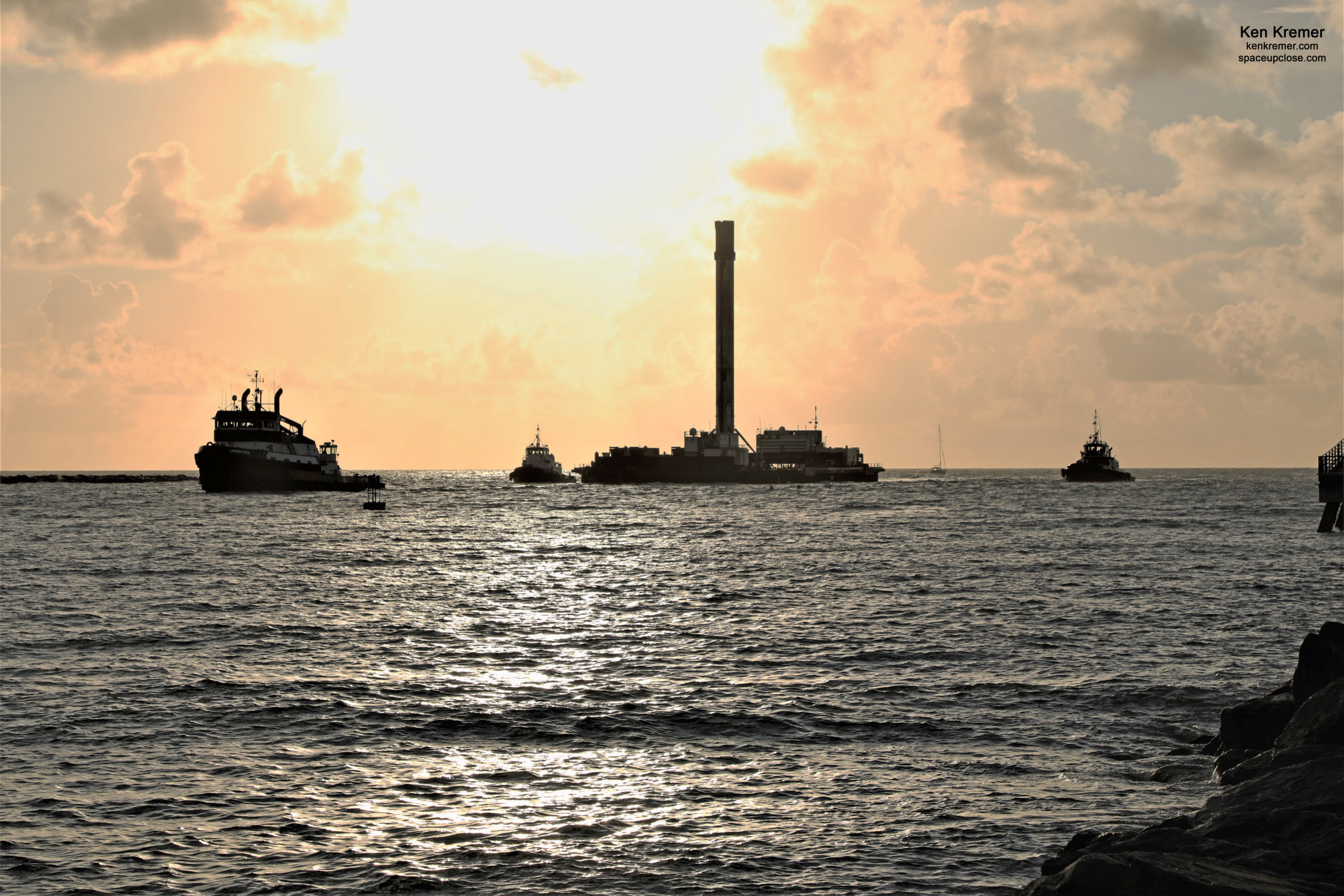
PORT CANAVERAL, FL – Continuing a string of complete successes the 2x launched and landed SpaceX Falcon 9 booster from Mondays Falcon 9 rocket launch of South Korea’s first dedicated military satellite July 20, 3.5 days ago, triumphantly returned to Port Canaveral during a glorious sunrise this morning, Friday, July 24, atop the JRTI droneship to a wonderful welcome from the Sunshine State on Florida’s Space Coast.
And to top that off the now twice used booster B1058.2 was still sporting a fully intact NASA Worm and NASA meatball emblazoned on the core from its first flight in May on the first Falcon 9 to launch humans on the history making Demo-2 launch of NASA astronauts Bob Behnken and Doug Hurley to the International Space Station (ISS).
Furthermore its very noteworthy is that this recycled Falcon booster featured a record turnaround launch period of just 51 days from its last launch on Demo-2.
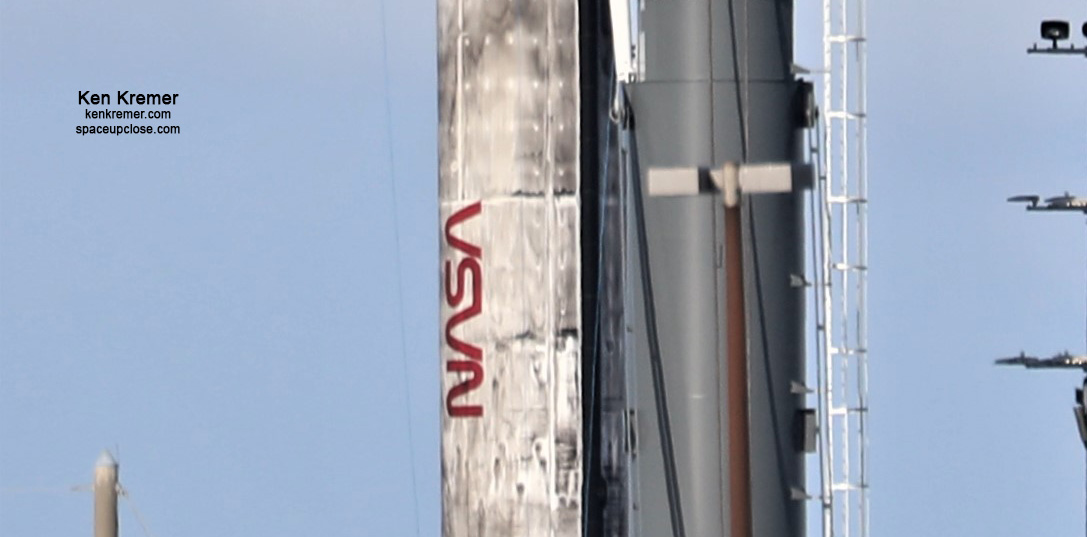
The previous record turnaround time between launches of the same Falcon 9 booster was 62 days accomplished by SpaceX achieved with a mission lifting off Feb. 17.
I had to act quick to capture this photo of the swiftly moving booster as it was dead center and upright for just moments between the huge legs of the Port Canaveral memorial anchor at Jetty Park.
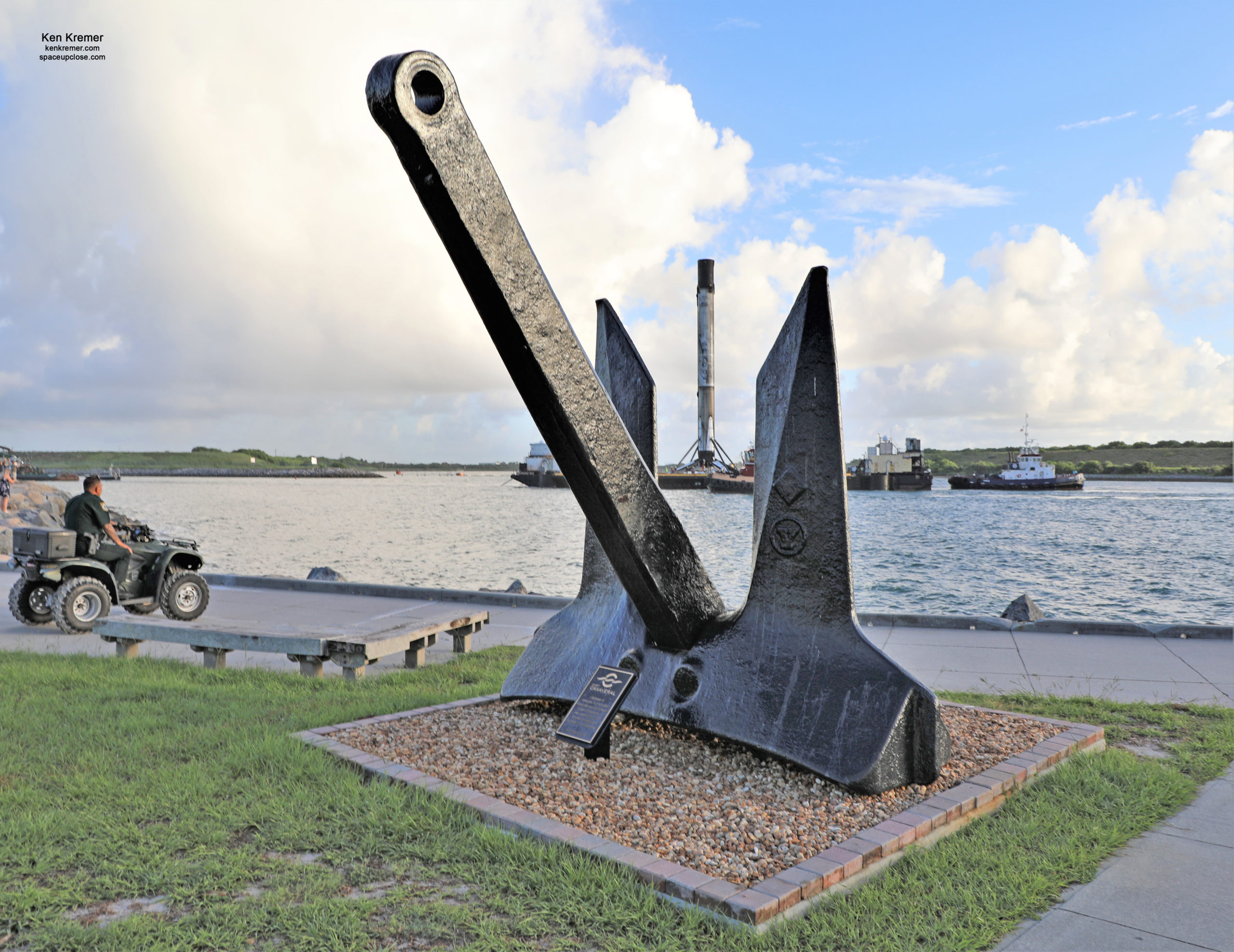
The weather cooperated this morning to afford a deliciously glorious ‘Space’ treat for space enthusiasts from SpaceX at Port Canaveral.
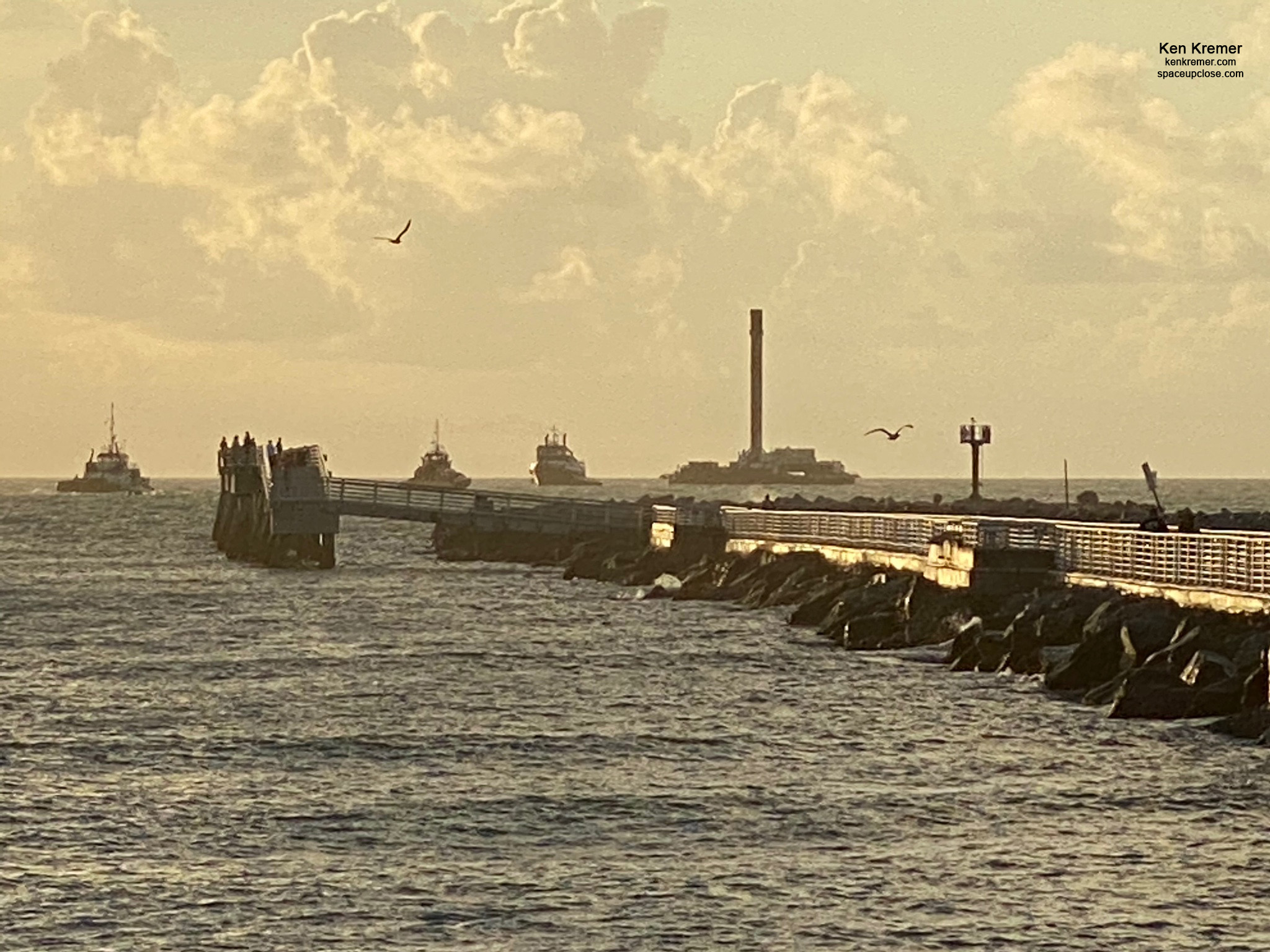
The newby East Coast droneship ‘Just Read the Instructions’ or JRTI arrived off shore of Jetty Park Pier and beach in the Atlantic Ocean accompanied by the SpaceX naval fleet at sunrise.
But before entering the SpaceX fleet inexplicably embarked on a circular loop to the channel entrance and back out.
JRTI and the 2x recovered launched/landed booster B1058.2 at last began her final approach to Jetty Park at 7 a.m. ET towed by tugboat Lauren Foss and welcomed by a small crowd of my media colleagues and mostly clueless beach goers.
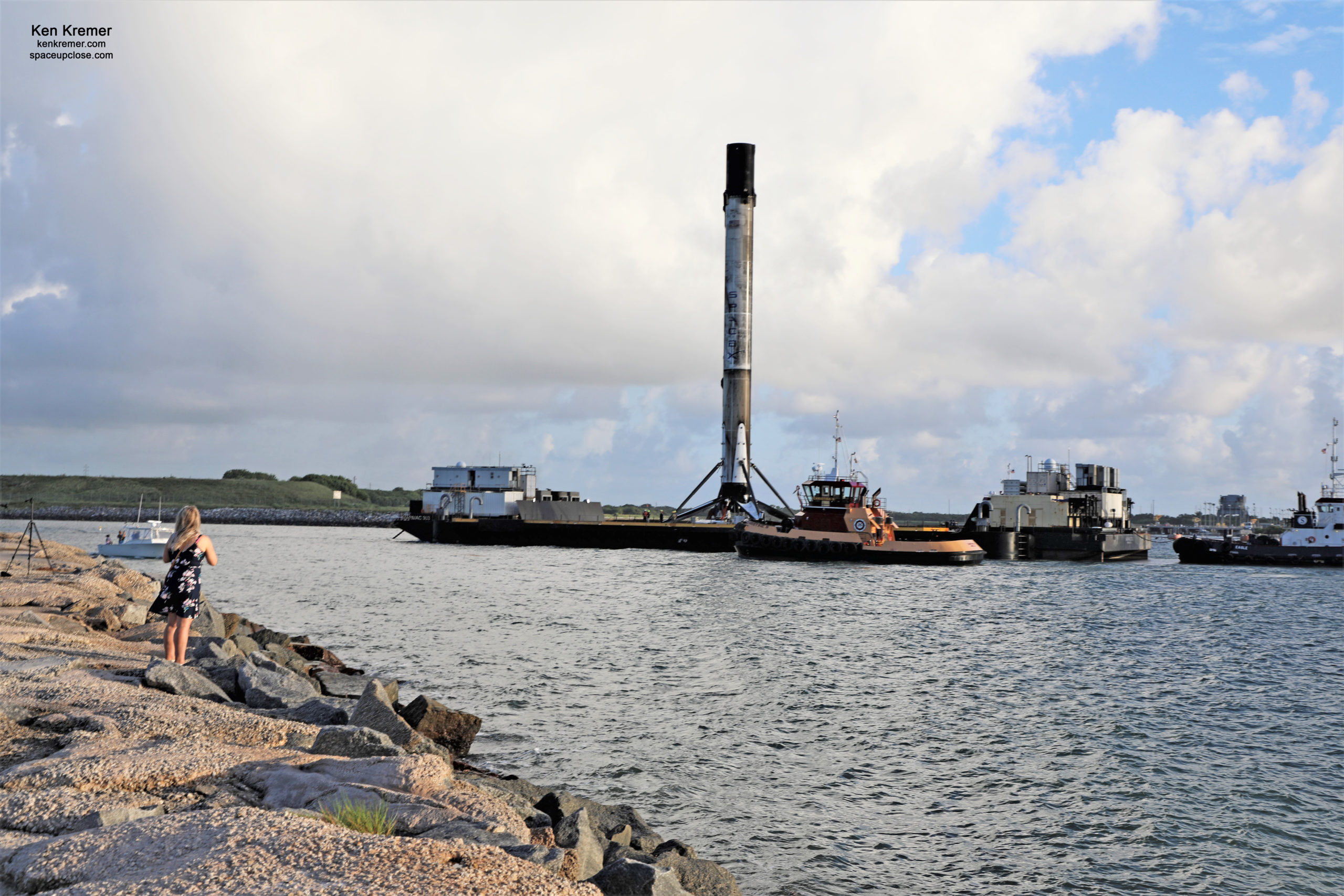
Enjoy our Space UpClose photo gallery of the arrival and docking of the noticeably more sooty Falcon 9 booster B1058.2 at the droneships normal northside berthing port at North Cargo Pier 6.
Check back as the gallery grows.
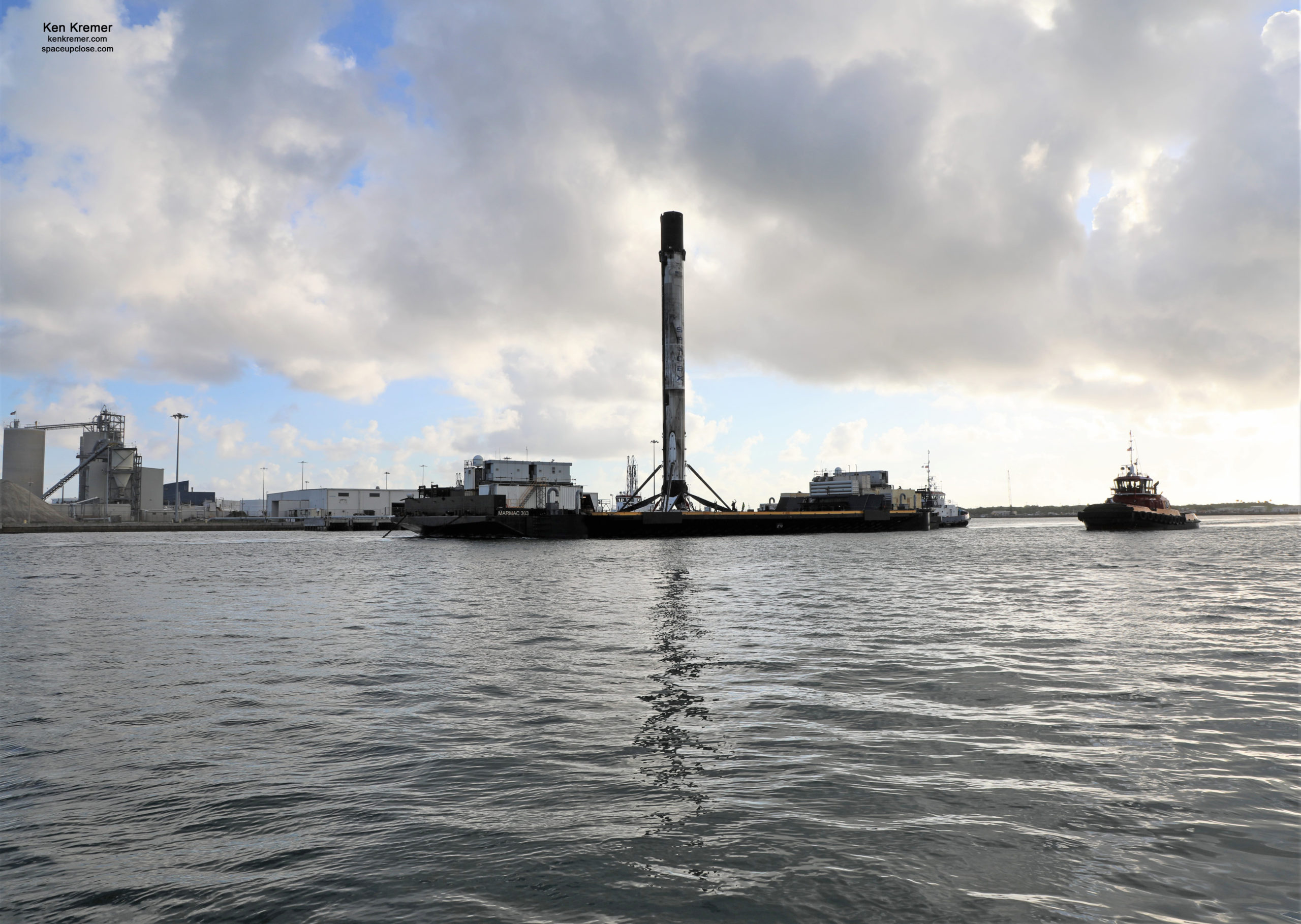
The 16 story tall booster standing firmly upright on JRTI sailed swiftly past the Pier and reached the northside berthing port as usual some 45 minutes after arrival.
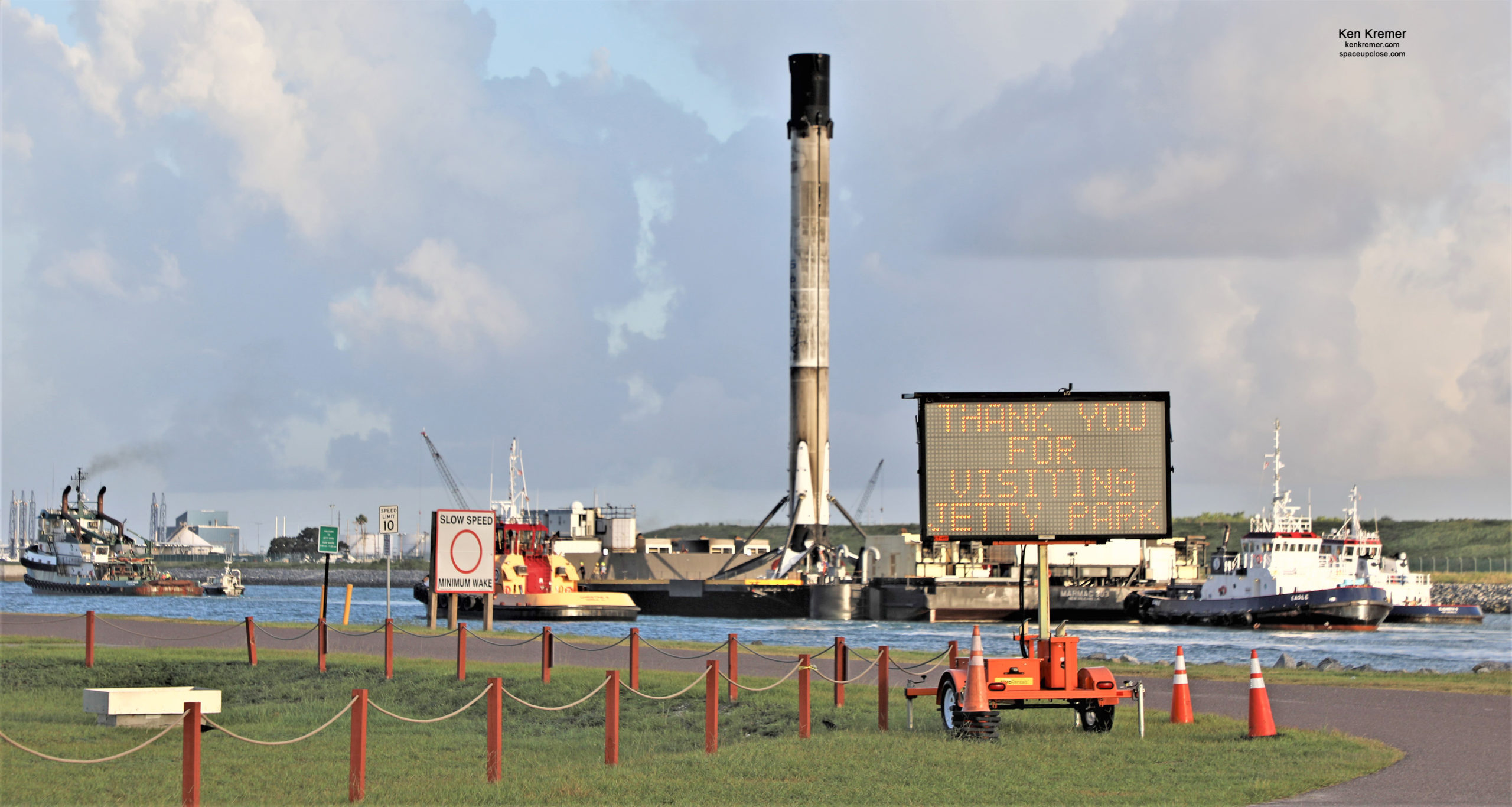
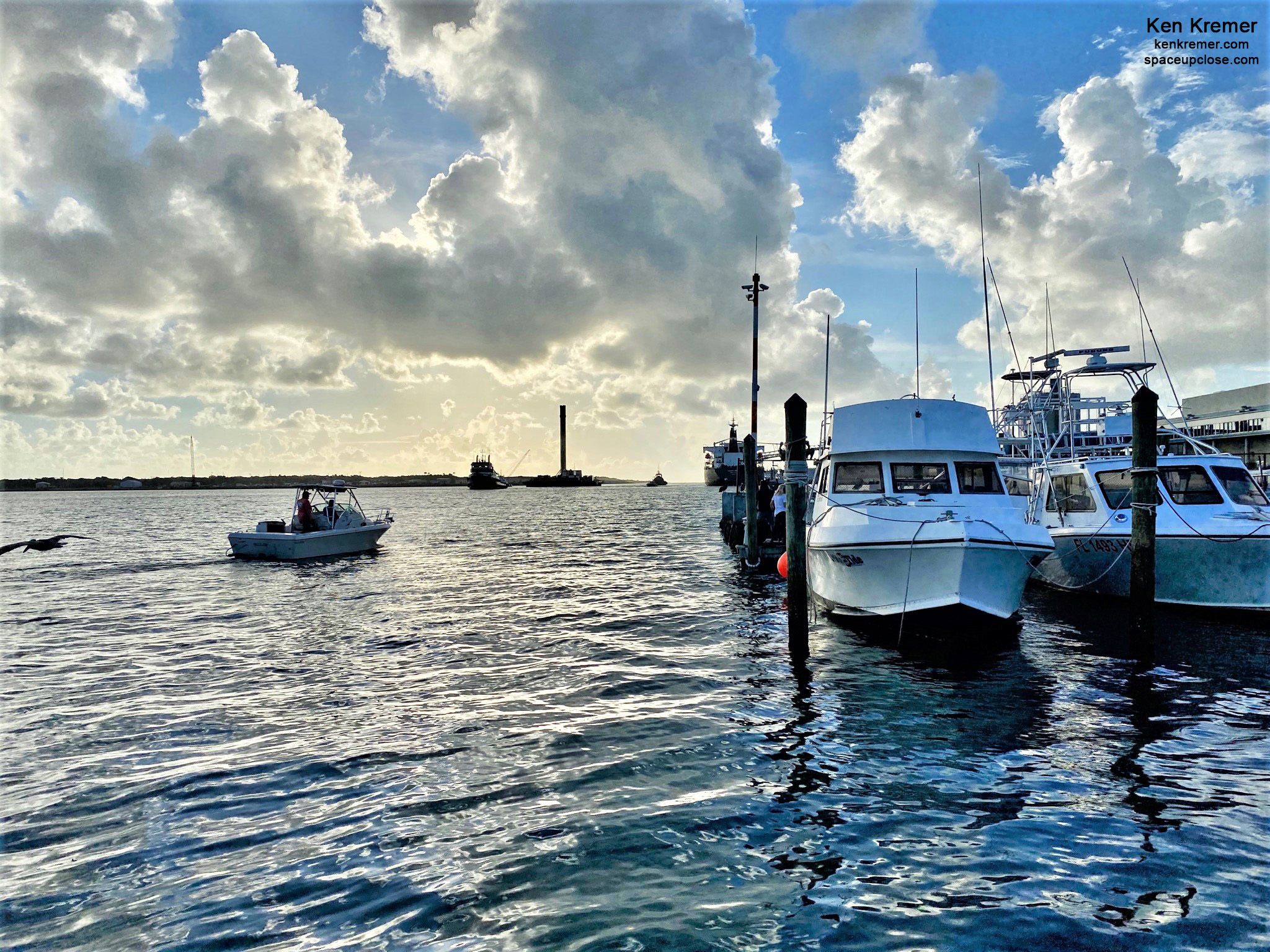
All this action comes on the heels of the spectacular return of the first ever dual caught payload fairing halves captured mid-air by SpaceX boats from the same launched nose cone on Wednesday morning July 22 – originating from Mondays Falcon 9 rocket launch of South Korea’s first dedicated military satellite July 20.
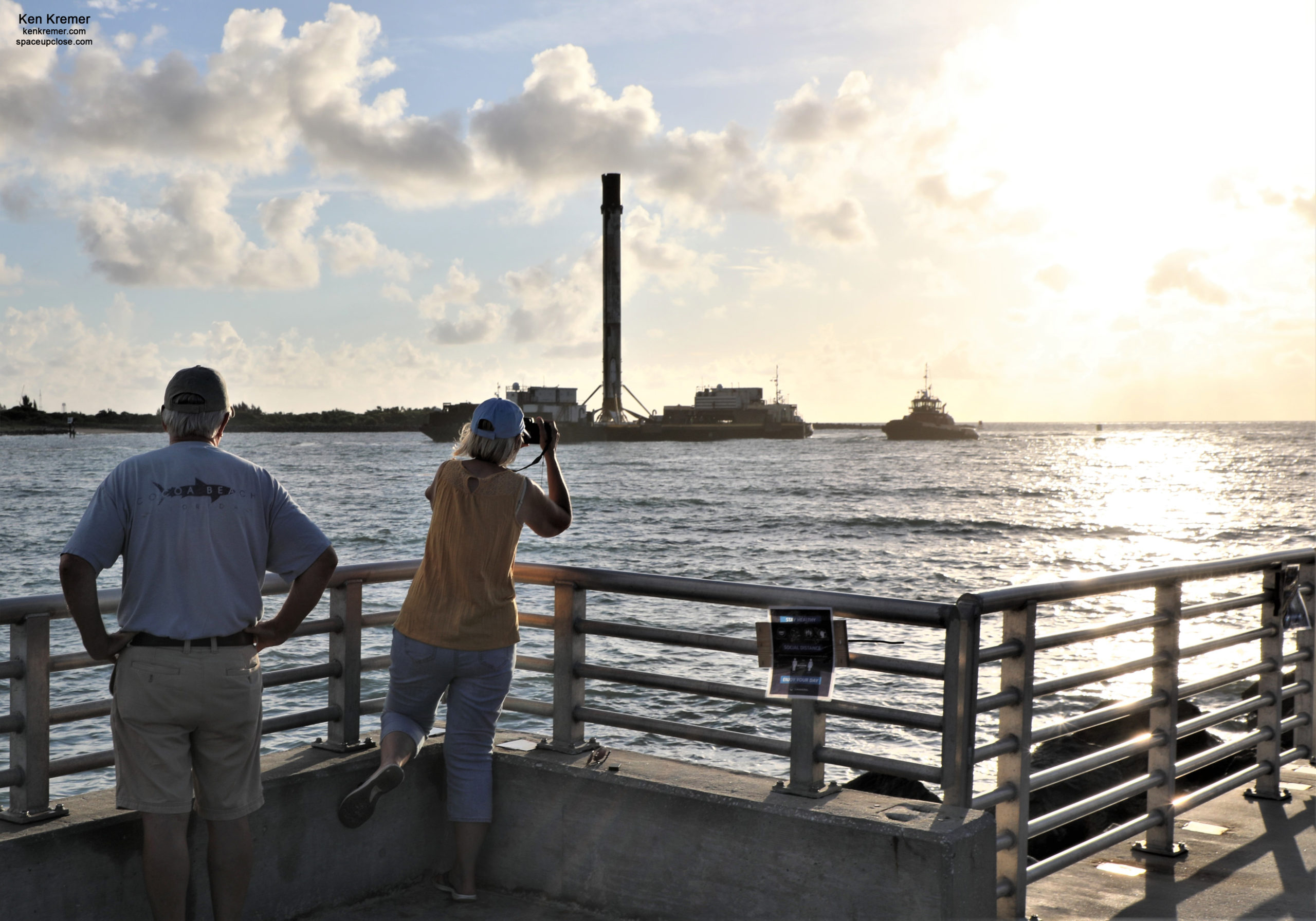
Check out our earlier story and photos
The next steps were for the SpaceX booster processing and crane crews to attach the hoisting cap which was accomplished late afternoon.
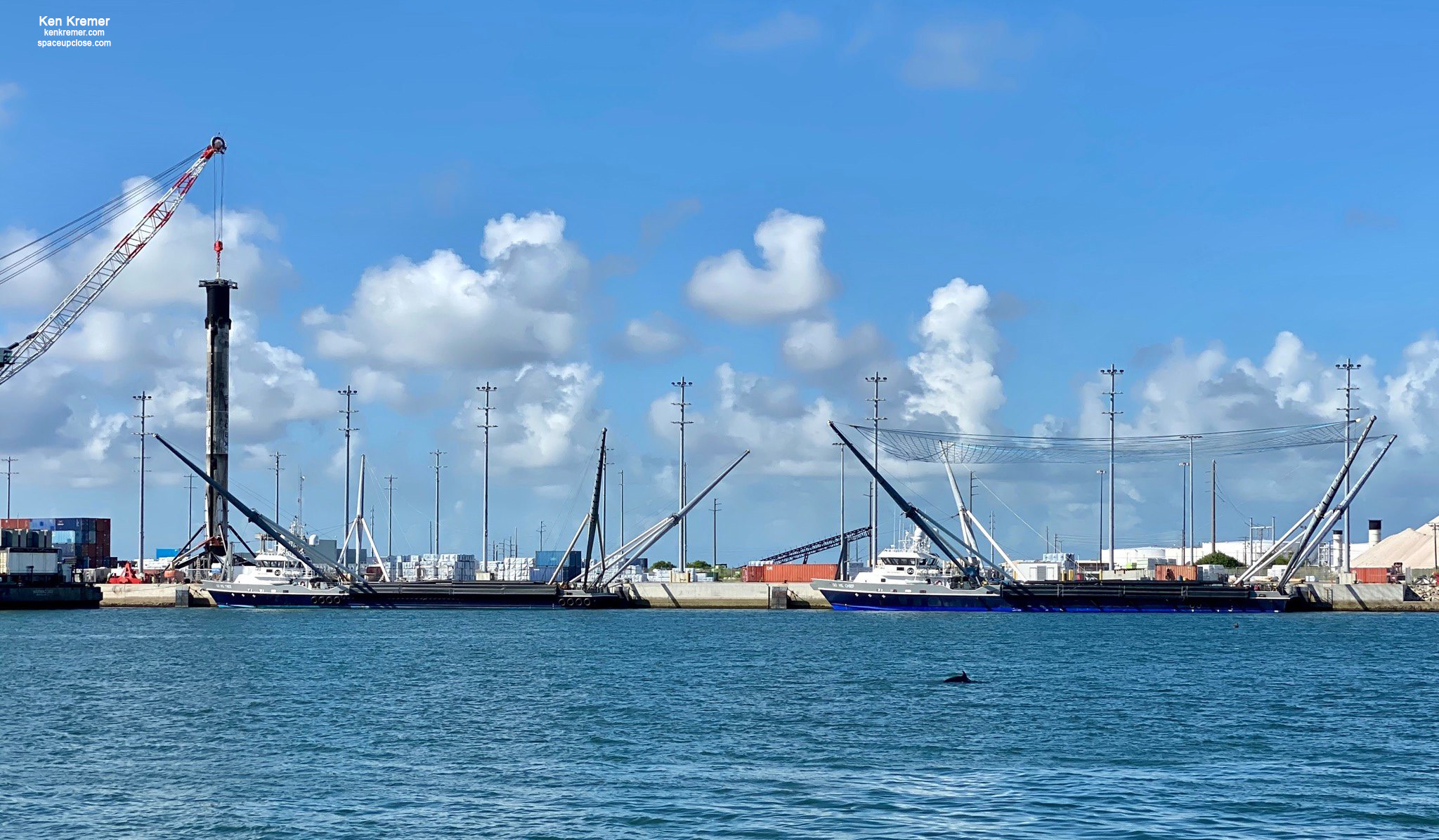
Thereafter the 156-foot-tall booster was hoisted off JRTI onto the ground work pedestal.
At that point around 5 p.m. ET after a very long day of rocket arrival and processing efforts work stopped for the day and leg work will presumably resume on Saturday.

The South Korean Anasis 2 military communications satellite was encapsulated inside aboard a flight-proven SpaceX Falcon 9 rocket launches at 5:30 p.m. EDT (2130 GMT) Monday, July 20 from Space Launch Complex 40 (SLC-40) at Cape Canaveral Space Force Station in Florida.
The fairings had returned to Port Canaveral overnight in darkness and were subsequently hoisted off mere hours later on Wednesday, July 22, onto cradled transporters after daylight dawned and driven away in rapid succession – presumably for eventual reuse.
What was once considered amazing science fiction is now confirmed science fact – and incredible to witness first hand from my technical background as a science researcher.
This was the second successful launch and landing for this particular Falcon 9 first stage booster B1058.2 – which by the way had flown once previously on the history making flight that successfully launched the Demo-2 crew of two NASA astronauts Bob Behnken and Doug Hurley to the International Space Station (ISS) on May 30 from Florida.
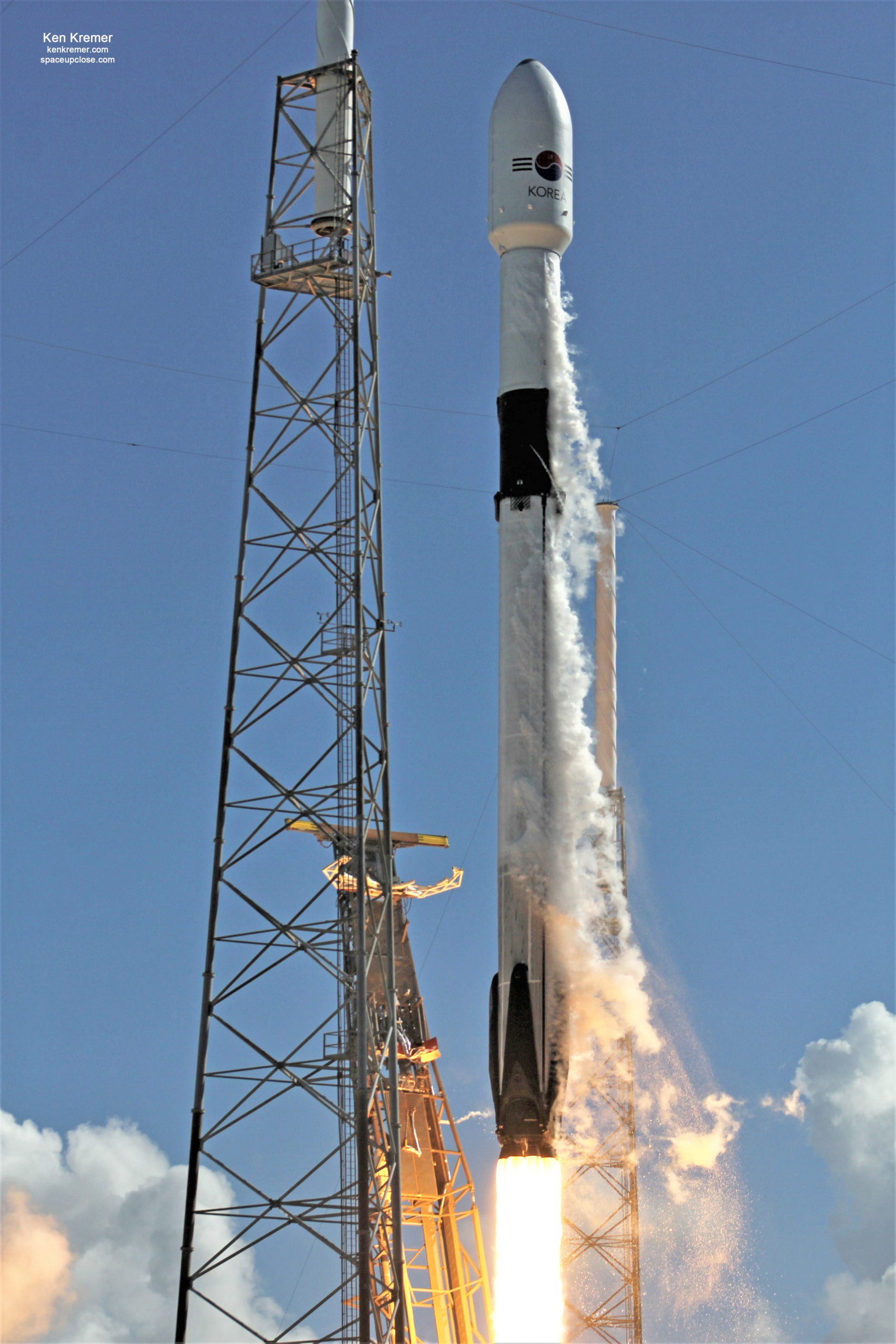
By the way Demo-2 was the first launch of humans from US soil in almost 9 years!
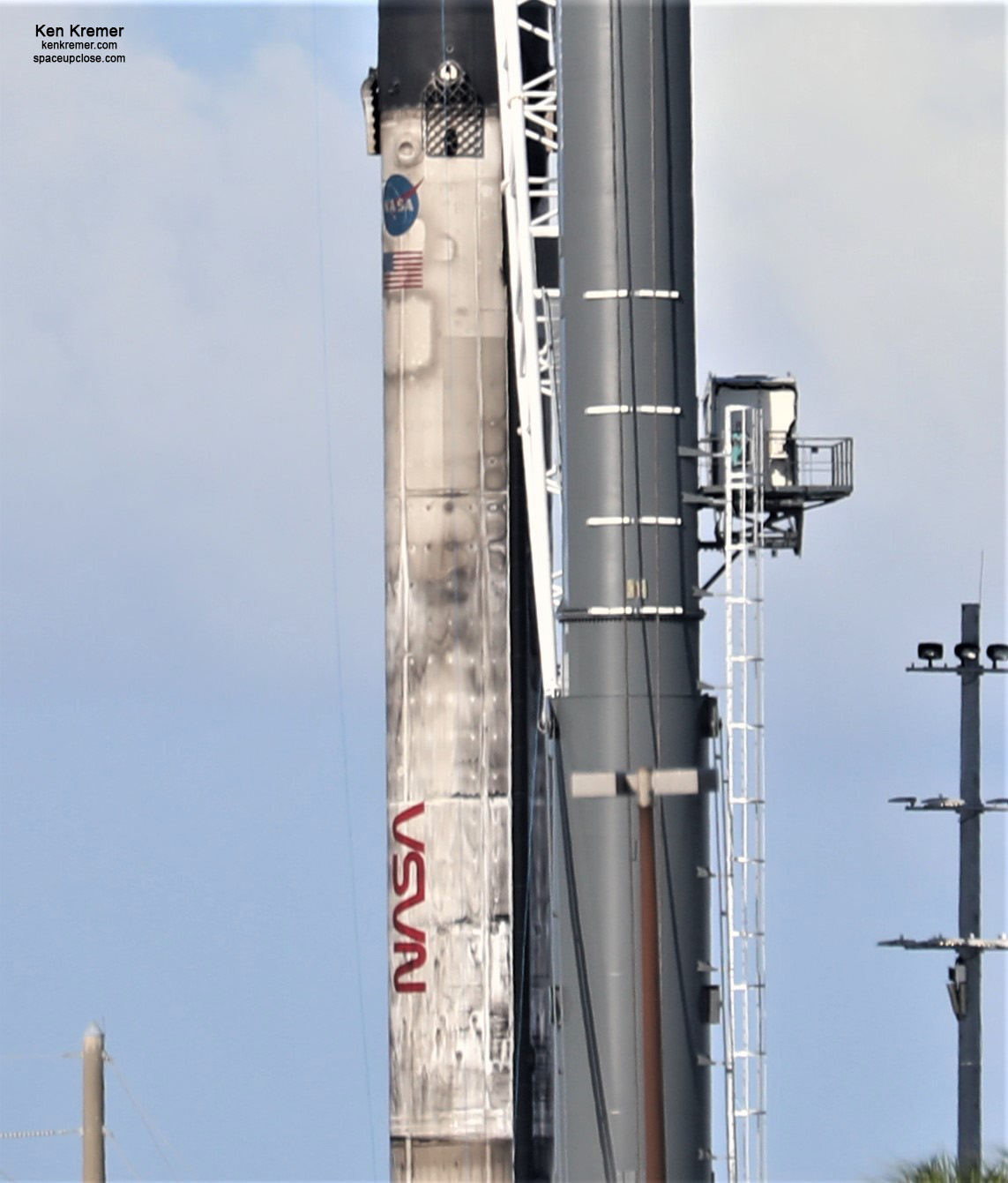
Watch these fairing catch videos of both nose cone halves released by SpaceX
Videos of yesterday’s catch of both fairing halves pic.twitter.com/yzTDFzlulL
— SpaceX (@SpaceX) July 21, 2020
Previously SpaceX had only been able to catch one fairing on three different occasions.
The launch of the Anasis-II national security military communications satellite to geostationary orbit for South Korea will enable its use to help with defense needs on the Korean peninsula and the ever present threats from North Korea under the leadership of Kim Jong Un.
The satellite was built by Airbus as part of an offset package between Lockheed Martin and the South Korean government as an exchange for the purchase of 40 F-35 combat aircraft jets back in 2014.
My commentary about the Anasis-II mission was featured on WESH 2 NBC TV New Orlando on July 20 and 21 along with my prelaunch photos as well as WFTV ABC TV News Orlando on July 20 and 21
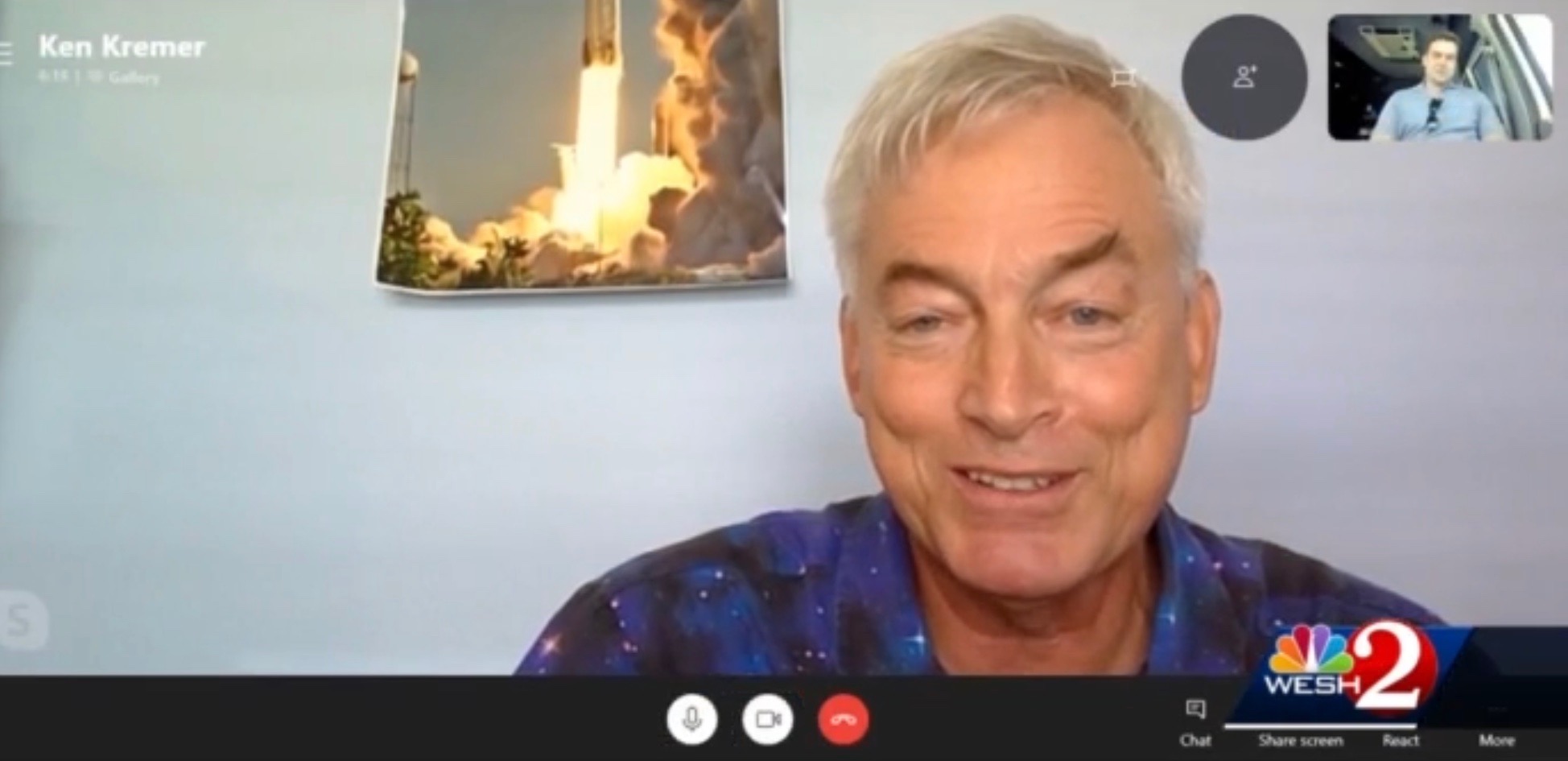
My launch and prelaunch photos were featured at Spaceflight Now
A SpaceX Falcon 9 rocket launched South Korea’s first dedicated military satellite Monday, helping fulfill an agreement between Lockheed Martin & the South Korean government in exchange for Korea’s purchase of F-35 fighter jets (📷: @ken_kremer).
STORY: https://t.co/NoacvRBfXh pic.twitter.com/GWSX22mvA9
— Spaceflight Now (@SpaceflightNow) July 21, 2020
Today’s Falcon 9 launch window at Cape Canaveral opens in two hours.
SpaceX will soon complete final preparations for fueling of the Falcon 9 rocket on pad 40.
The rocket is set to launch with South Korea’s Anasis 2 military satellite (📷: @ken_kremer). https://t.co/1vfSxib8EF pic.twitter.com/jCVaIQj5WM
— Spaceflight Now (@SpaceflightNow) July 20, 2020
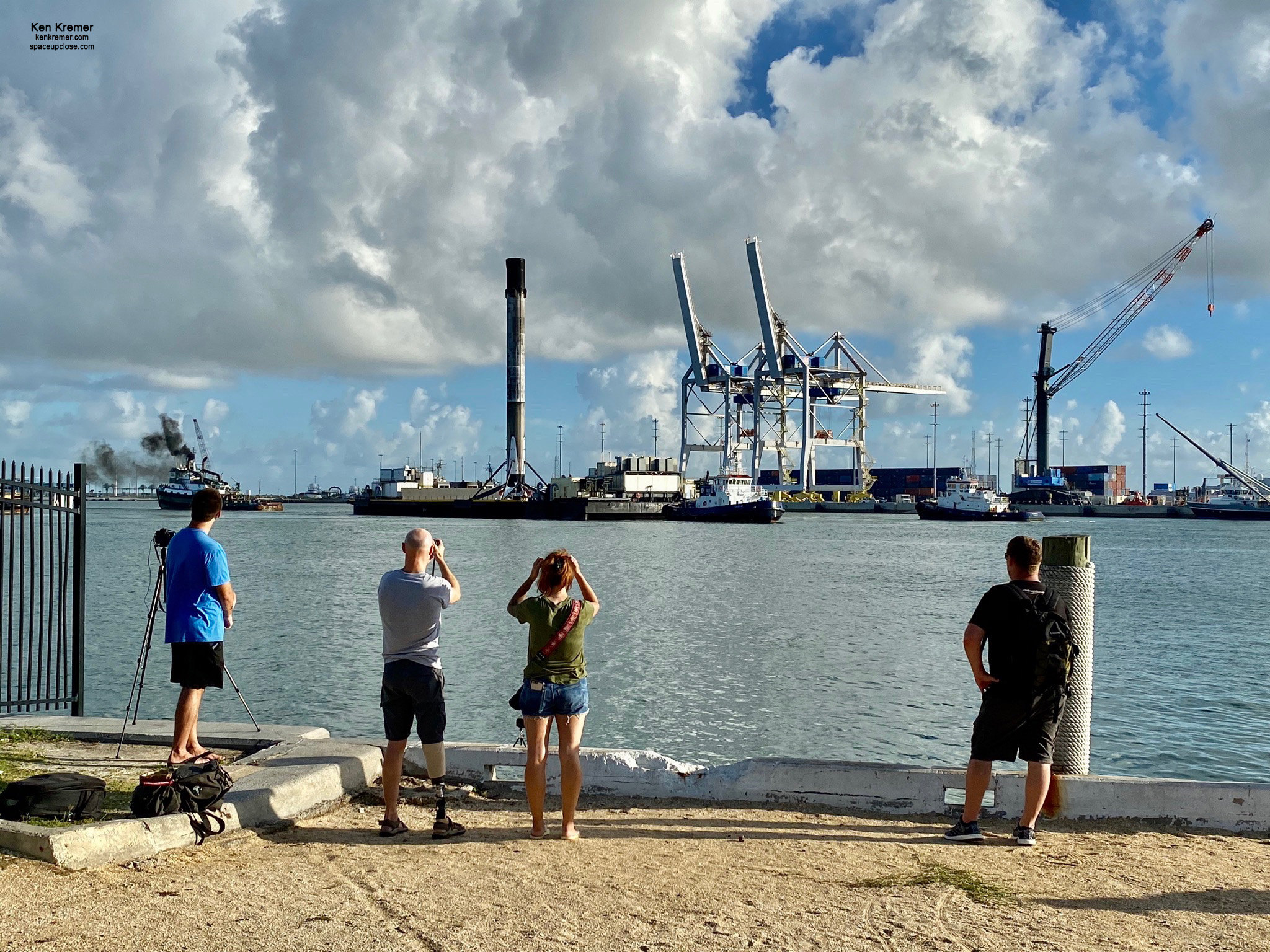
Watch Ken’s continuing reports about Commercial Crew and Artemis and more onsite for live reporting of upcoming and recent SpaceX and ULA launches including Demo-2, Starlink, X-37B, Solar Orbiter, Mars 2020 and more at the Kennedy Space Center and Cape Canaveral Space Force Station.
Stay tuned here for Ken’s continuing Earth and Planetary science and human spaceflight news: www.kenkremer.com –www.spaceupclose.com – twitter @ken_kremer – email: ken at kenkremer.com
Dr. Kremer is a research scientist and journalist based in the KSC area, active in outreach and interviewed regularly on TV and radio about space topics.
………….
Ken’s photos are for sale and he is available for lectures and outreach events
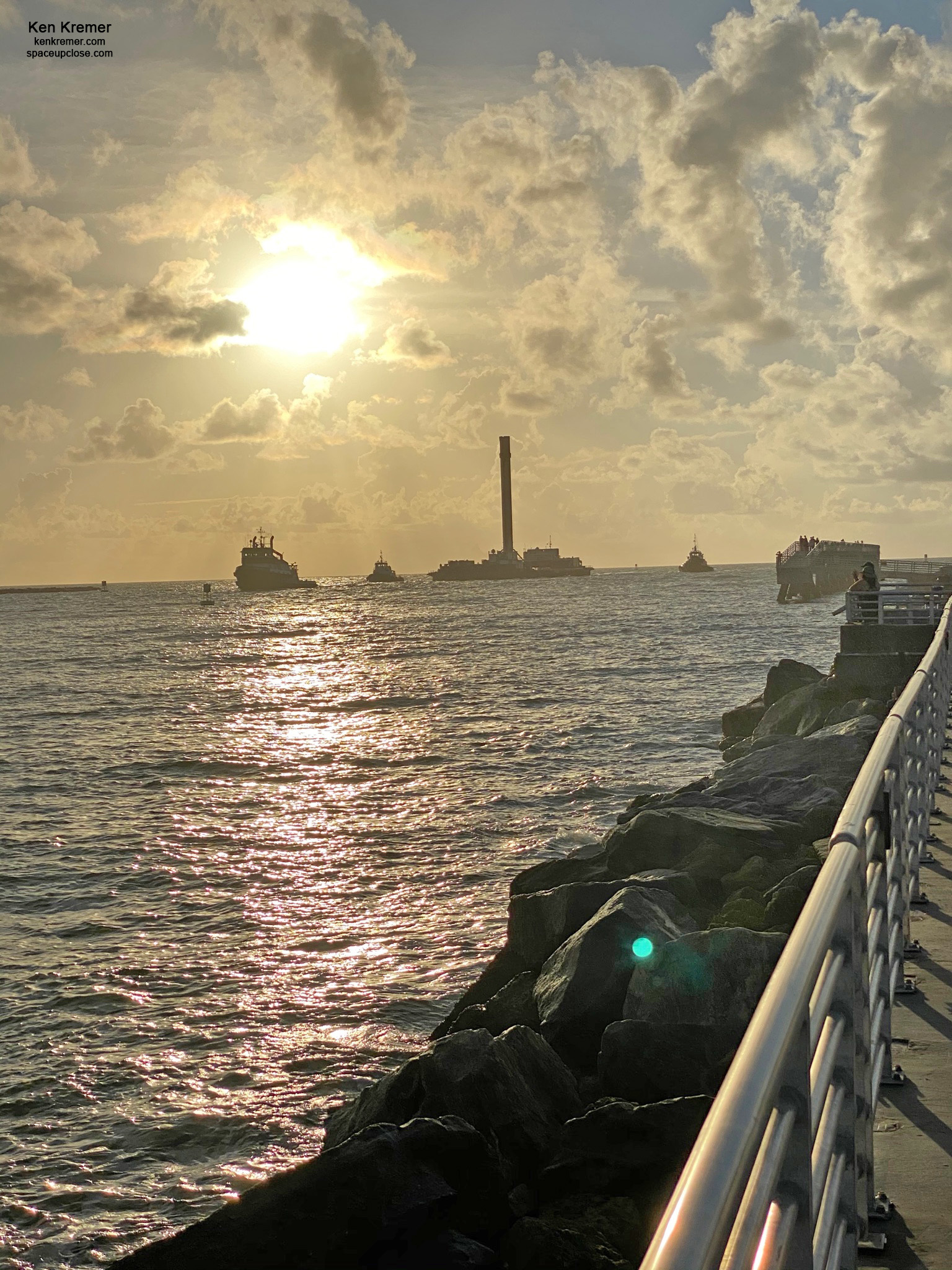
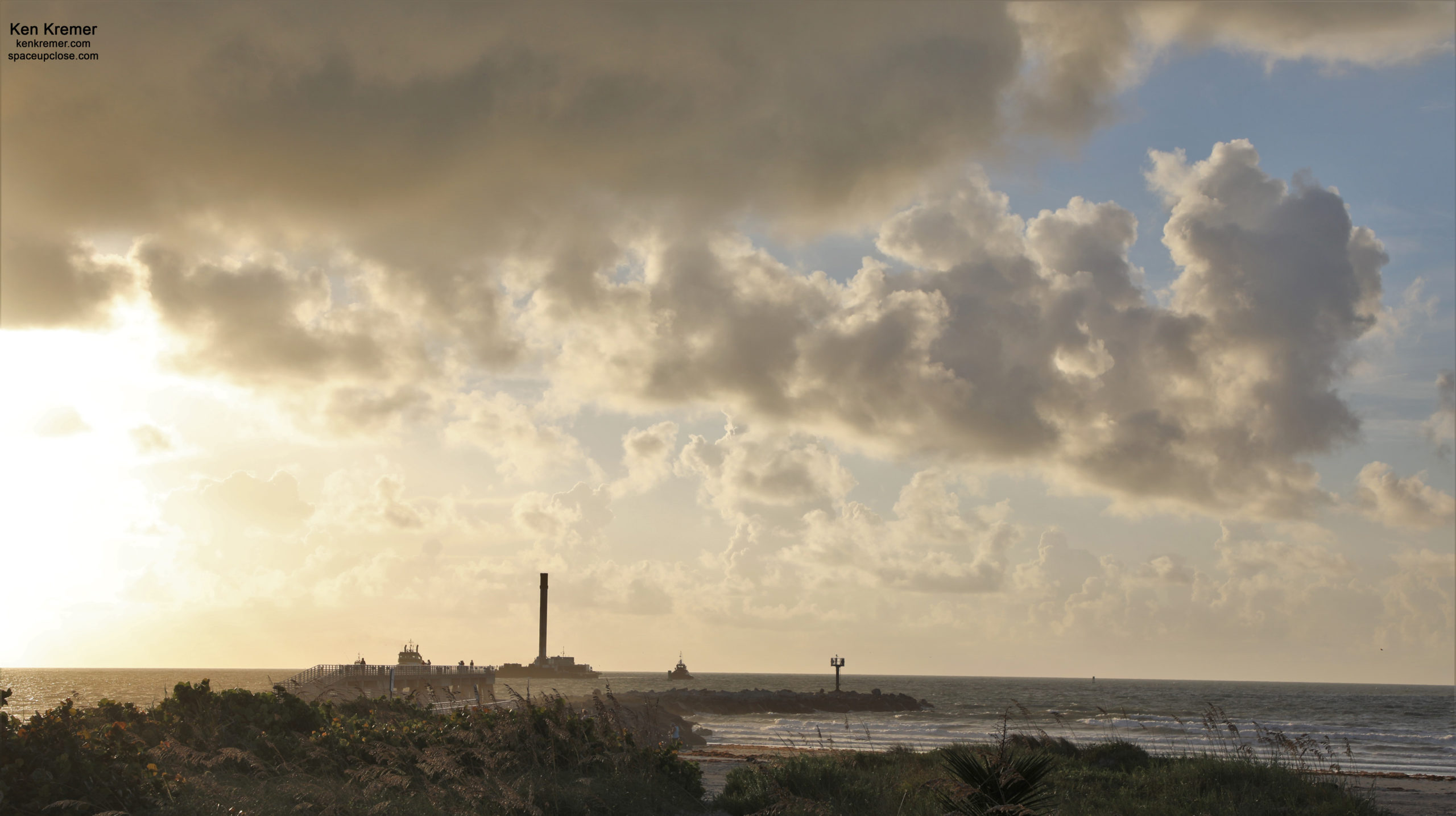
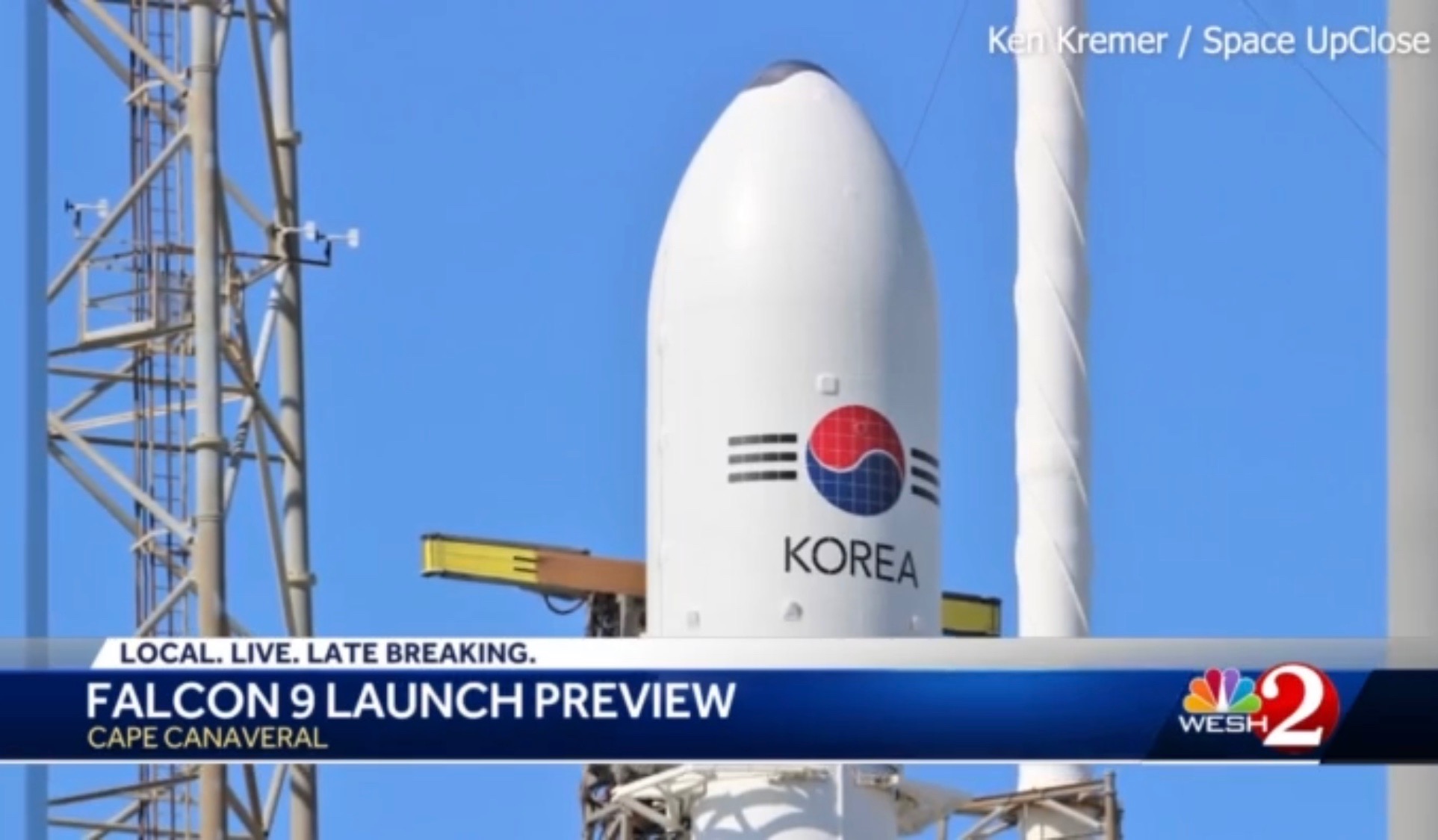
x




